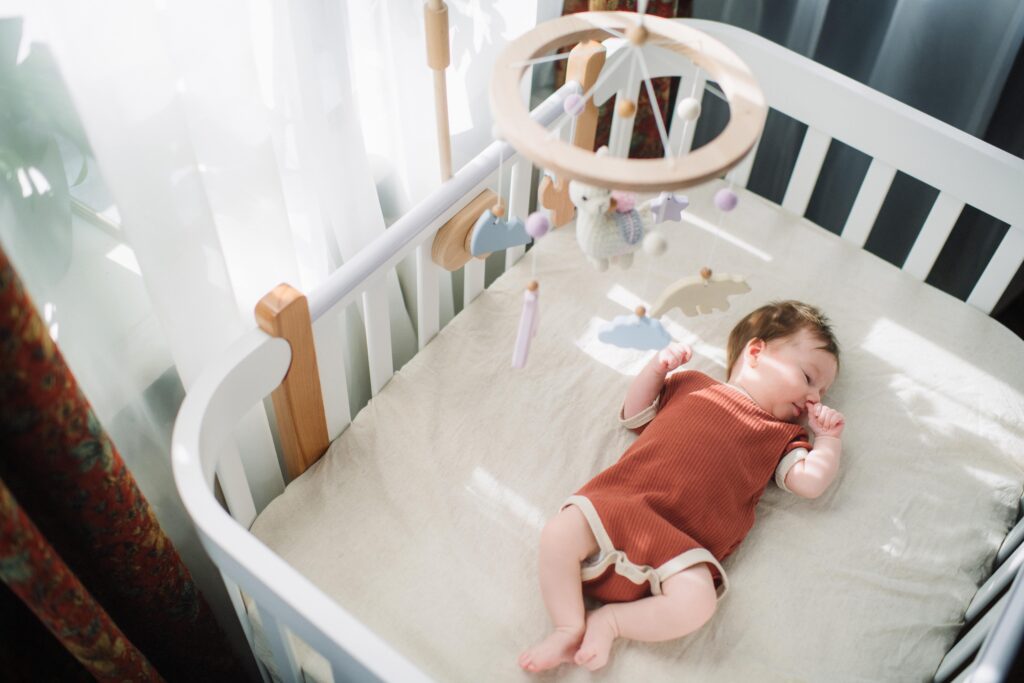by DR. JOY JACKSON
A crucial responsibility in caregiving for infants is ensuring their safety and well-being. In 2022, the rate of unintentional suffocation and strangulation deaths among infants, occurring in bed, was three times higher in Polk County compared with Florida. In light of those concerning statistics, DOH-Polk wants to emphasize the importance of safe sleep practices for infants. These safety practices can reduce the risk of sleep-related infant deaths.
You can ensure safe sleep for your baby by remembering your ABCs: Alone, on their Back, and in a Crib.
Alone
Your baby should always sleep alone on their own sleep surface. It is not recommended, under any circumstances, to be sharing your bed or sleep surface with your baby. The risk of infant death increases exponentially when you sleep in the same bed or sleep surface as your baby. Try to avoid falling asleep with your baby in other spaces like couches as well. The risk of sleep-related infant deaths is higher when babies sleep with someone on couches, armchairs, or cushions.
As with people in general, it is not recommended that pets share a sleeping space with a baby. Allowing a pet to sleep with a baby can increase the risk of a baby suffocating. Pets, no matter how gentle or well-behaved, may unintentionally pose risks to infants during sleep, including suffocation or accidental injury.
Instead of bed-sharing, place the baby’s crib or bassinet in your room for convenience and comfort. It is recommended that a baby sleep in the same room as their parent for at least the baby’s first six months.
Back
Your baby should sleep on their back at all times. A baby sleeping on their stomach or on their side could have more trouble breathing, and they could be at more risk of suffocating. The problem with the side position is that it’s easier for the baby to roll onto their stomach, which comes with a high risk for suffocation.
If you’re worried about your baby choking on their spit while they’re on their back, remember that the baby’s gag reflex and airway anatomy will prevent that from happening.
Ultimately, the safest position for a baby to sleep in is on their back, for naps and night time.
Crib
Your baby should sleep on a firm, flat surface in a crib or bassinet that meets safety standards. Sleeping on a soft surface can block a baby’s airways. Loose bedding like blankets, toys, and pillows should be kept out of the baby’s crib to prevent risk of the baby suffocating. Many parents might feel that blankets and comforters should be added to their baby’s crib for comfort, but those items can increase risk of suffocation and overheating. If you’re worried about your baby being cold, dress them in sleep clothing that will keep them warm. However, it’s important to remember that weighted items such as weighted clothing are not safe for babies.
A firm flat mattress with a fitted sheet is all that’s needed for a safe and comfortable sleep surface. An empty crib reduces the risk of the baby suffocating or overheating.
While adhering to the ABCs of safe sleep, here are a few other safe sleep practices to remember.
Keep the room your baby is sleeping in smoke-free. Prevent your baby from overheating by keeping the room they’re sleeping in at a comfortable temperature. Check your baby for signs of overheating like sweating, a hot chest, or flushed skin.
By prioritizing safe sleep practices, parents and caregivers can reduce the risk of sleep-related accidents and promote safe sleep for their babies.
About the Author: Dr. Joy Jackson, an internal medicine physician, serves the community as director of the Florida Department of Health in Polk County (DOH-Polk). For more information about DOH-Polk, visit mypolkhealth.org. Follow DOH-Polk on Twitter at twitter.com/FLHealthPolk.
